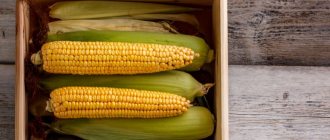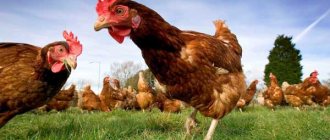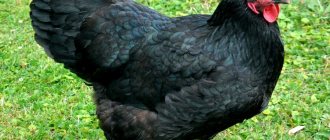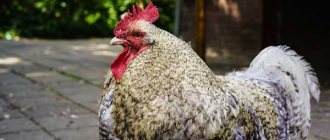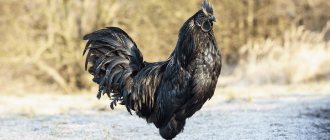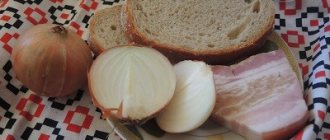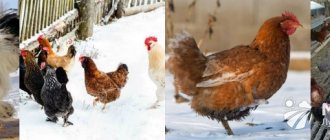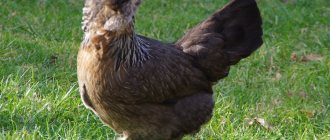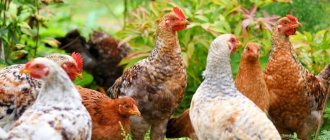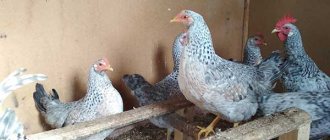With the approach of a new, warm season, most poultry farmers begin to think about purchasing quality chickens. If you are just starting out with chickens, I would like to advise you when to buy laying hens for further breeding and a rich collection of good eggs. If you are interested in this question, then it is time to take care of expanding your chicken coop with young chickens.
Important! A natural, homemade chicken egg is a healthy, wholesome and very tasty food, and a good help for replenishing the family budget.
When and where to buy laying hens
The optimal time to buy a 4.5-5 month old chicken is spring. The peak egg production of chickens occurs in the summer, since this time has the longest daylight hours, and there is also more pasture.
The optimal time to buy a 4.5-5 month old chicken is spring.
In the fall, it is necessary to cull: leave the hens with the best egg production for the winter and add a few new ones to them. In this case, after winter you can count on good egg laying. The question remains: where to buy laying hens.
There are 2 purchasing options:
- Market.
- Poultry farm.
The price difference between one and the other option is small. The main thing is the quality of the product. At markets, poultry farmers offer chickens of different breeds. It is important for the buyer to carefully examine the birds to see if they are sick. If you come across a conscientious seller, he will give comprehensive answers to your questions, regardless of whether you are a beginner or an experienced poultry farmer.
[adsp-pro-4]
The positive thing is that most often farmers keep poultry in spacious premises, often with the possibility of walking. Compared to chickens raised in a poultry farm, such laying hens have better immunity. But there is also a minus: there is no guarantee that the bird is vaccinated. In addition, you may be unlucky with a seller who sells a bird that is sick or unsuitable as a laying hen to an inexperienced buyer.
Laying hens can be purchased from farmers or poultry farms.
As a rule, chickens are not kept in poultry farms for more than 1 year, since it is advantageous to renew the hybrid stock with young animals. The poultry is kept in cages and the feed contains artificial additives. Compared to domestic chickens, they have relatively low immunity and are poorly adapted to free range. Their egg production drops quickly. The positive side of shopping at a poultry farm is that all vaccinations are available.
Rejection examples
On the market you can find a large supply of chickens of various ages. Sometimes they sell, frankly speaking, bad laying hens that will not bring much benefit to the farm. On the Internet you can find advertisements “I sell productive chickens” and sometimes it turns out that the birds have long passed their average age.
There are also cases when, under the guise of purebred laying hens, they try to sell their crossbreeds, which do not have the necessary characteristics.
The chicken on the left clearly stands out, its crest “lies”
This photo shows chickens that clearly exceed the size of 2 kg, which is the limit for most breeds of egg production. They have good feather and beak condition. The comb of one of them is slightly inclined, although the other two are even.
Therefore, you can decide that this is not normal for this breed and the chicken has health problems. Thus, the main rule for choosing laying hens is to carefully examine them. Of course, in this example, the signs of a meat breed are immediately noticeable, but not every buyer will see deviations in one of the chickens.
Also in advertisements like “I sell laying hens” you can find frankly tortured and certainly unproductive individuals. These hens are missing feathers in many areas.
Although a quite decent carcass can be seen underneath, the condition of the feathers indicates that such birds will not lay eggs well.
This is most likely caused by unbalanced feeding, which has led to such depletion of calcium in the body. Due to the shedding, it is so noticeable. In addition, if the bird is already molting, then this indicates age, which is also proven by the gray scales on the legs.
Therefore, there is no need to look at how much a chicken costs if it is in this condition. After all, even if its price is extremely low, it will be of little use.
For a better understanding of the criteria for choosing laying hens, we recommend watching a video about chickens, which covers everything about the breeds and what you need to know before purchasing.
Source: 1inkubator.ru
How to recognize a good layer
The optimal age for purchasing an egg-laying chicken is 20-26 weeks. By this time the bird becomes sexually mature. The best performance in the first year is from 230 to 260 eggs. Subsequently, egg production depends on the breed. Pedigree laying hens maintain high productivity for several years. The peak egg production of hybrid chickens occurs in the first year, then there is a significant decline.
Chickens of egg breeds, unlike meat breeds, are not very large. On average, the weight of a five-month-old chicken is about one and a half kilograms. An overly fatty or, conversely, thin chicken is not suitable as a laying hen.
The egg production of laying hens directly depends on the breed.
Here are the signs by which you can identify a laying hen:
- Clean and well maintained appearance. The plumage is even, without defects, growths and bald patches. The bird's feathers are smooth, with an even shine, and fit well. A sign of a laying hen is late molting. Such a chicken will lay more eggs compared to a molted bird.
- Dirty and untidy feathers stuck together near the cloaca indicate an intestinal infection. For example, birds affected by coccidiosis significantly lose weight and productivity.
- When choosing a chicken, pay attention to its skin tone. A healthy bird has skin that is not sagging and has a light pink hue. The bird's yellowish skin indicates a diseased liver. You should not buy this chicken.
- A healthy laying hen has a medium-sized comb, smooth and red. Ear lobes and “earrings” are of the correct shape. If the bird is healthy, its eyes are slightly bulging and shiny. Sunken and sour eyes indicate illness. Sneezing and coughing are signs of a respiratory disease (mycoplasmosis).
- A healthy bird's belly is soft, the keel is even, and the chest is wide. A curved keel is one of the signs of rickets. A good laying hen has a flat back, strong and straight legs.
A healthy bird has thick and shiny plumage, bulging eyes, and a bright comb.
Other signs to look out for
If the chicken is active and cheerful, this is a good sign. A bird's drowsiness indicates illness. A pale comb indicates the presence of a chicken mite, which causes brain diseases and anemia.
[adsp-pro-5]
Poultry farmers have such a concept as “intersex,” when a chicken also has rooster characteristics (characteristic outlines of the head, spurs, large comb). Such a bird cannot be a laying hen. This phenomenon often occurs as a result of inbreeding.
Important! It is advisable that the bird be vaccinated, especially against such a dangerous infection as salmonella. If there is no vaccination, then you need to contact a veterinarian. This will not only keep your pets healthy, but also protect your family.
Advice from experts
The performance of chickens is influenced not only by the correct choice, but also by the conditions of detention. Changing the habitat for birds is quite stressful, and this negatively affects egg production. Until the chicken gets used to the new chicken coop, there can be no talk of any eggs. The adaptation period can last up to a month. During this period, it is useful to add ascorbic and succinic acid to the feed.
After the move, the hens become stressed and may not lay eggs for a month.
Switching from one food to another is also stressful. Therefore, at first it is advisable to give newly acquired chickens their usual food, gradually increasing the amount of new food.
Expert advice
Not only the correct choice of laying hens affects their performance, but also the correct maintenance after purchase. First of all, it is worth remembering that for chickens, changing their environment is stressful, and this greatly affects their egg production.
Until the hen gets used to the new chicken coop and the surrounding environment, she will not lay eggs. This period can last about a month. To reduce it, experts advise giving succinic and ascorbic acid.
Changing feed is also stressful for chickens. To avoid this, it is advisable to feed the birds the same compound feed (or regular feed) for the first few days as before, gradually increasing the proportion of the new one.
Where to begin
Preparation
So, you said to yourself: “I want to have laying hens - how to start breeding? First you need to create conditions for their maintenance. This includes a chicken coop (or any suitable room), equipping it with nests, perches, feeders, and drinkers. You also need to prepare food.
By the way, we wrote about proper feeding of laying hens here: https://pticevodu.ru/kak-kormit-kuric-nesushek-pravilno.html. And in this article it is written in detail about what to feed laying hens and in what quantities.
If the space for the chicken coop is small, then laying hens can be raised in cages. Many breeds are adapted to such conditions.
What breed of bird to choose
Chickens of the Loman Brown breed
The best breed of laying hens for domestic use is Loman Brown . This statement is based on the high egg production of this breed and the breeding experience of many breeders. Which laying hens are best to breed? The most productive are considered:
- Kuchinsky anniversary,
- Leghorn,
- Hisex,
- Pushkinskaya.
But most often for breeding at home, those birds chosen are those offered by local poultry farms, nurseries, and private farmers. As a rule, such breeds have already proven themselves in your climate zone and growing them will be even easier.
[ads-pc-1]
Russian white
As you might guess, the homeland of this chicken is Russia. One of the ancestors of the Russian White is the Leghorn, one of the most highly productive breeds. Accordingly, the Russian White inherited high egg production rates from its ancestors.
Productivity: hens begin to produce eggs very early, around 5 months of age. The productivity of the Russian White per year is about 210 eggs.
Color: This chicken has only one color option. And as you might guess from its name, it is white.
Character: This is a very calm bird that does not like to create conflict situations.
Breeding chickens for eggs: incubator or pullets?
To start raising laying hens, you first need to buy them. There are two options: breeding chickens using an incubator and purchasing pullets.
The main advantage of the first method is its low cost. But there are many more shortcomings. First of all, there is gender ambiguity. That is, a large percentage of males can hatch from one clutch, although we need laying hens.
Another negative point is that not all chickens will survive during incubation hatching. In a good situation, only 80-85% of chicks usually survive up to 20 days.
A more reliable way to have laying hens is to buy pullets. Usually, chickens are taken for eggs at the age of 5-6 months to be sure that the flock will survive and begin laying eggs in the near future.
Many owners of summer cottages purchase laying hens for seasonal use. Closer to winter, during the first cold weather, poultry is sold for meat.
Advice! It is better to buy pullets from industrial enterprises. When purchasing from private owners, there is a high probability of buying a sick bird.
Many owners of summer cottages purchase laying hens for seasonal use. Closer to winter, during the first cold weather, poultry is sold for meat.
How to choose young animals
A healthy bird can be easily identified by external signs. What you need to pay attention to:
- The plumage is uniform;
- The eyes are clear;
- The belly is large and soft;
- The comb, beak and legs are smooth;
- The scallop should be bright red.
- Lethargy, pallor, drowsiness are signs that the bird is sick.
A healthy laying hen is always on the move - she digs, tramples, searches, and generally does not sit still.
If you plan to breed chickens, then purchase laying hens along with a rooster. Of course, the chicken will lay eggs without it, but these eggs will be unfertilized and chicks cannot be hatched from them. For about 30 hens you need one rooster.
Rooster for laying hens
When is the best time to buy laying hens?
The optimal age for pullets is 4.5-5 months. It is better to start in the spring (April, May), so that in the summer, when the conditions for keeping and rearing are the most optimal (sufficient daylight, pasture, greens, vegetables), the productivity of laying hens is maximum.
Chick selection
from 1 to 7 days
To understand at what age to purchase young animals, you need to determine the requirements and capabilities.
It is advisable to buy chickens at the beginning of April. To have time to grow them before autumn. In this case, they take care of the poultry house, where the livestock will be reliably protected from rain and recurrent frosts.
Day-old chicks are covered with down without dirt inclusions. They move actively in search of food. React to light and sound. The cloaca is colored pink. The back is straight without curvature.
After 30 days
In the absence of an insulated room, it is advisable to take a closer look at the month-old livestock.
They go shopping in the spring, with the appearance of the first vitamin greens. The chickens are already vaccinated against common diseases. Therefore, the mortality rate decreases when compared with day-old birds.
Information on the topic is given in the article “How can you determine the age of a chicken.”
Now let's look at how to choose a rooster for breeding.
If the goal is to get eggs immediately and without waiting, then you need to choose birds over 20 weeks old. First of all, laying hens of this age are culled based on their weight.
~5 month old chickens
- Important recommendations on how to choose a laying hen include the condition of its plumage. It should be clean, soft and shiny. The presence of bald spots and growths is unacceptable, which may indicate poor maintenance or impressive age.
- The next method on how to choose the right laying hen is to examine the condition of the feathers around the cloaca. They must be clean; the presence of contamination indicates intestinal diseases such as coccidiosis and others. Dirt is immediately noticeable on sick chickens, and it is contraindicated to allow them into your chicken coop, because the further outcome will be disastrous.
A dirty neck is a reason to think
- Young and healthy individuals have a red comb, while old and sick individuals have a faded comb. If it is cold, then this indicates poor blood circulation in the bird’s body. This condition occurs during illness or with age.
- The beak and legs of pullets are yellow. The eyes should be dry without excessive mucus secretion. This knowledge will help you decide where to begin your inspection to select the appropriate livestock.
How to properly breed laying hens at home: living conditions
There are general recommendations and useful tips that you can follow to raise healthy, productive and pleasing chickens.
- To prevent egg production from falling in the chicken coop, it is necessary to maintain a constant temperature - approximately +12, +14 degrees. Not critical from -2 to +25. Temperatures that are too low can lead to frostbite; temperatures that are too high can lead to decreased productivity.
- The room with laying hens should have artificial and natural lighting. It is advisable to hang fluorescent lamps and in winter increase the daylight hours for chickens from 06.00 to 19.00
- The chicken coop should have vents or windows so that the room can be ventilated. Hoods are equipped for these purposes.
- How many nests do you need for laying hens? For 3-4 hens, one nest is required, installed from the floor to a height of 0.5 meters.
- The length of the drinker and feeder is calculated: 10 cm per head.
- Breeding laying hens at home in winter. First of all, you need to insulate the chicken coop. There should be no drafts or high humidity. You should also provide the bird with lighting; it is advisable to hang fluorescent lamps. By the way, a very useful article about feeding and keeping laying hens in winter - https://pticevodu.ru/kak-kormit-nesushek-zimoy.html
- Litter plays a very important role in the chicken coop during cold weather. Its height must be at least 20 centimeters. To do this, you need to regularly spread straw or sawdust on the floor.
One of the necessary conditions for any chicken coop is a roost. It is usually made from poles with a diameter of 3-4 cm. The crossbars should not be too thin, otherwise the chicken will hold on tightly to it and eventually get overstrained legs.
Is it profitable to raise laying hens?
Certainly! Homemade eggs are not comparable to factory eggs. They have a more natural yolk color and a richer nutritional composition (of course, if we are talking about growing on natural feed).
Maintenance costs in the summer are minimal, but the return is high. In the summer, chickens can be released into enclosures or, if the terrain allows, completely released into the wild.
Having 10-15 chickens, you can already think about selling eggs, for example, to neighbors or friends. Ecologically clean and natural homemade eggs will always be in demand and more expensive than store-bought ones. The profitability of breeding is obvious.
Features of laying hens
The key feature of laying hens is the ability to lay large eggs. They are edible and of high quality. This product is produced by purebred laying hens. They are characterized by common features:
- chicken body weight – no more than 2.5 kilograms;
- graceful physique;
- rapid physical growth;
- thick feathers;
- large wings;
- a long tail;
- The comb is straight and hard – it has 7 teeth.
The first clutch occurs 125 days after the chicken is born. At day 140, the hen reaches full physical development.
The best breeds
The best breeds are obtained from a cross between different types of chickens. To choose the best option, it is worth considering the features of each of them.
Andalusian blue
This breed is considered very popular because it has a beautiful shade of feathers. Egg production parameters are considered average and reach 160-180 eggs per year. The eggs are medium in size and have a white shell.
Hamburg
These birds are often raised for ornamental purposes. They are characterized by the absence of feathers on the front of the head, white earlobes, and a raised comb. These chickens are considered small - their weight does not exceed 2.5 kilograms. Egg production parameters are rarely more than 160 pieces. The eggs are small and weigh a maximum of 55 grams.
Dominant
These birds are considered record holders for productivity. Laying hens are characterized by a massive body and many feathers. They produce up to 300 large eggs per year, weighing up to 70 grams. Laying begins early. Productivity parameters are maintained for 3-4 years.
Isa Brown
This popular egg breed was developed in France. A laying hen can produce up to 320 eggs per year. A characteristic feature is the brown tint of the shell. Chicken is highly resilient and easily adapts to any conditions.
Kuchinskaya Yubileinaya
This breed is considered universal. She produces up to 220 eggs per year, and they weigh 60 grams. A hen begins to lay eggs at six months. At the same time, it is permissible to raise the breed as a meat breed. Its weight reaches 3 kilograms and has excellent taste.
Leghorn
These birds weigh a maximum of 2 kilograms and produce up to 300 eggs per year. A characteristic feature of chickens is considered to be high endurance. Individuals quickly reach sexual maturity. They have a beautiful appearance and a characteristic leaf-shaped crest.
Loman Brown
This breed was developed in Germany, based on the Plymouth Rock rooster and Rhode Island hen. Egg production parameters reach 300-330 pieces. Chickens begin to lay eggs at the age of 130 days. Active laying lasts up to 80 days. The eggs are large in size and weigh up to 65 grams.
Minorca
These are one of the most recognizable egg-laying breeds. Chickens begin to lay eggs early - at 5 months. It will be possible to obtain up to 160 eggs weighing 56-59 grams per year. Today the Minorca is considered an endangered breed. There are several hundred such chickens in the world.
New Hampshire
This is a hybrid meat-egg breed. It was developed by American scientists. The basis was Rhode Island individuals. The key disadvantage is the low survival rate of young birds. They do not exceed 86%. Annual egg production is 200 pieces. The eggs weigh 60 grams and have a yellow-brown shell.
Rhode Island
Chickens have an attractive appearance. When raising individuals, it is important to take into account that they require mandatory walking. Keeping them in cages is prohibited. Chickens begin to lay eggs at 6 months. Average egg production is 180 pieces. The eggs weigh 62 grams and have a brown shell.
Russian white
This breed is included in the ranking of the most popular egg varieties. Individuals are perfectly adapted to Russian conditions. Laying hen eggs weigh about 55 grams.
Tetra
This is one of the most productive crosses, which is why it is often chosen for home keeping. The bird brings up to 310 eggs per year. They reach a weight of 65 grams. The first clutch occurs at 21 weeks of life.
Ukrainian Ushanka
This breed is considered meat-eating. It was developed back in the seventeenth century. A characteristic feature is the tufts of feathers that grow in the area of the ear openings. Chickens are easy to care for and have good productivity. Laying hens gain weight every day and weigh up to 2.3 kilograms. They produce 160 eggs per year.
High Line
These chickens are characterized by high productivity. When a bird reaches 80 weeks of age, it produces 350 large eggs. The advantage of the breed is its unpretentiousness to living conditions.
Hysek Brown
This breed is excellent for breeding. It produces large eggs that reach 60 grams. The egg production parameters per year are 300 pieces. The advantage of birds is considered to be their high resistance to infections, fungi, and helminthic infestations.
Hysek White
These birds are also characterized by high productivity. They differ from the previous breed only in the shade of their plumage. These chickens are characterized by snow-white feathers.
Shaver
Chickens of this breed produce a lot of eggs. Egg production parameters reach 235 eggs per year. Laying hens produce the most eggs at 27-46 weeks of life. Their weight is 63 grams.
Sussex
Like the Rhode Island, the Sussex is a "dual-purpose" chicken, meaning it is used for meat or eggs. The Sussex is the oldest English chicken.
Sussex chicken breed
Productivity: A young Sussex can easily produce up to 250 eggs per year. The color of the eggs can vary from brown to creamy white.
Color: The Sussex breed has several basic different colors. The most common is this: pure white plumage with a black neck and tail.
Character: An incredibly calm breed, from which it is simply impossible to expect trouble. The Sussex is one of the most social breeds. She can even eat grain from her owner's hands.
An example of a good layer
When choosing a laying hen, you should immediately avoid buying birds with physical defects. These include deformed fingers or keel, and an irregularly shaped beak. The following features indicate the high productivity of chicken:
- high physical activity;
- a good appetite;
- long and wide body;
- well developed breasts;
- strong, widely spaced legs.
Too much or too little protein in a chicken's diet will often cause it to fall on its feet. This will have a negative impact on productivity later on.
Plumage
The productivity of a laying hen can be assessed by its feathers. A healthy individual has dense and shiny plumage. An unproductive chicken is distinguished by dull and loose feathers.
Molting also indicates egg production. Productive individuals lay eggs for a long time, and therefore shed their feathers in October-November. At this time, they become unattractive, so inexperienced poultry farmers often discard such individuals.
Unproductive laying hens begin to molt as early as July-August. Moreover, this process lasts 4 months. However, by the time the flock begins to form, such chickens look more attractive. Therefore, they are often mistakenly given preference.
The number of flight feathers on the wings is of no small importance. Good layers have quite a lot of them.
Beak and legs, how to choose for beginners
The shade of the beak, iris and paws helps determine the productivity of chickens. When buying remontant young animals, you should pay attention to the yellow tint of the legs, irises and beak. As performance increases, the pigmentation gradually disappears. The higher the productivity of the chicken, the faster this process occurs.
First, pigmentation disappears from the iris. Then the beak and paws are involved in the process. Therefore, birds with good egg production are not as brightly pigmented in the fall as unproductive layers.
It is also worth considering that it is not recommended to leave young animals with deformed legs. This feature is inherited and provokes a decrease in productivity parameters.
Comb and earrings of a hen and chick
Chickens with pale or overdeveloped combs are not suitable for the formation of livestock. Pale and wrinkled earrings and comb indicate low egg production of the individual. In productive birds they have a scarlet or red tint and a warm and elastic consistency.
conclusions
In homestead livestock farming, chickens of egg breeds are often raised. Among the most productive are Leghorn, Russian White, Highsex, Loman Brown, Kuchinskaya Jubilee. Every 2-3 years, due to a decrease in productivity, chickens are culled, and the poultry farmer buys replacement young stock
To select egg-laying chickens for further use, you need to pay attention (especially to beginners) to the following exterior signs of high productivity:
- The correct distance between the pubic bones should be at least 3 fingers of an adult’s hand.
- Volumetric and soft belly.
- Brightly colored and elastic comb and earrings.
- Yellow pigmentation of legs, iris, beak. In the fall, it is paler in highly productive chickens.
- Shedding. Good layers molt in mid-autumn.
- Plumage. In a healthy and highly productive bird, it is shiny and tightly adjacent to each other.
You can read about why chickens go bald here.
Which layer to choose?
For household purposes, birds are often purchased at the market or poultry farm. When purchasing an individual from farmers, it is worth asking questions regarding the breed and living conditions. Most chickens purchased from farmers are considered winter-hardy and produce large eggs.
However, it is important to check birds for diseases. Not all farmers are conscientious and can sell bad laying hens to inexperienced people for personal farming.
When purchasing new chickens from a poultry farm, you can be sure that they are vaccinated. However, it is difficult to breed such birds at home. They are characterized by poor immunity and have difficulty adapting to new conditions.
Getting used to the house
At first, the chickens will not produce eggs. Moving and leaving their usual environment causes them stress. A sign of stress in chickens is frequent head twitching. Succinic acid in tablets and ascorbic acid tablets will help your poultry become calmer and get used to a new place.
Vitamin C is given for 3-4 days, 4-6 tablets per chicken. Succinic acid is added to birds' drink - ? tablets for 10 chickens. Unusual eating habits can also cause stress. When purchasing, you should ask the seller what the chickens were fed. The transition to other foods should be done gradually.
Chickens need care. Create comfortable conditions for their life, and the result will not be long in coming. Raising chickens is profitable and exciting, and the right choice and careful care of them is the key to success.
Distinctive features of laying hens
There are a lot of best breeds of laying hens; there are also crosses of these breeds, the females of which are also distinguished by high egg production. But they all have common features that are characteristic specifically for representatives of egg breeds.
Laying hens do not gain too much body weight; they have a special body shape and a special psyche:
- The main advantage of laying hens is the number of eggs laid per year. For representatives of the best breeds, this figure is above the 300 mark;
- early maturity of young animals - already 120 days after birth, representatives of many breeds already begin to lay eggs. By this age, chickens are fully feathered, become independent and do not need the troubles of the mother hen;
- The maximum weight of male egg breeds does not exceed 3 kg. And laying hens usually weigh even less - about 2.3 kg. Such breeds have the ability to fly, and the plumage of the wings and the entire body is better developed than that of other breeds of chickens. The wingspan is large, and the tail feathers are elongated;
- chickens perfectly absorb and process all types of feed, the metabolism in their body is accelerated. Feed should be enriched with minerals as much as possible. During the period of active egg production, laying hens especially need calcium so that the egg shells are strong enough;
- breeders note the following traits in these breeds of chickens - fussiness, high activity. Therefore, laying hens should be provided with free range at any time of the year;
- During the selection process, the mothering gene was lost in the best breeds of laying hens, so such individuals do not become hens. In order to breed these breeds on the farm, you have to lay eggs in an incubator, or lay eggs with hens of other breeds.
This is interesting: Maran chicken breed description care feeding breeding - break it down point by point
